
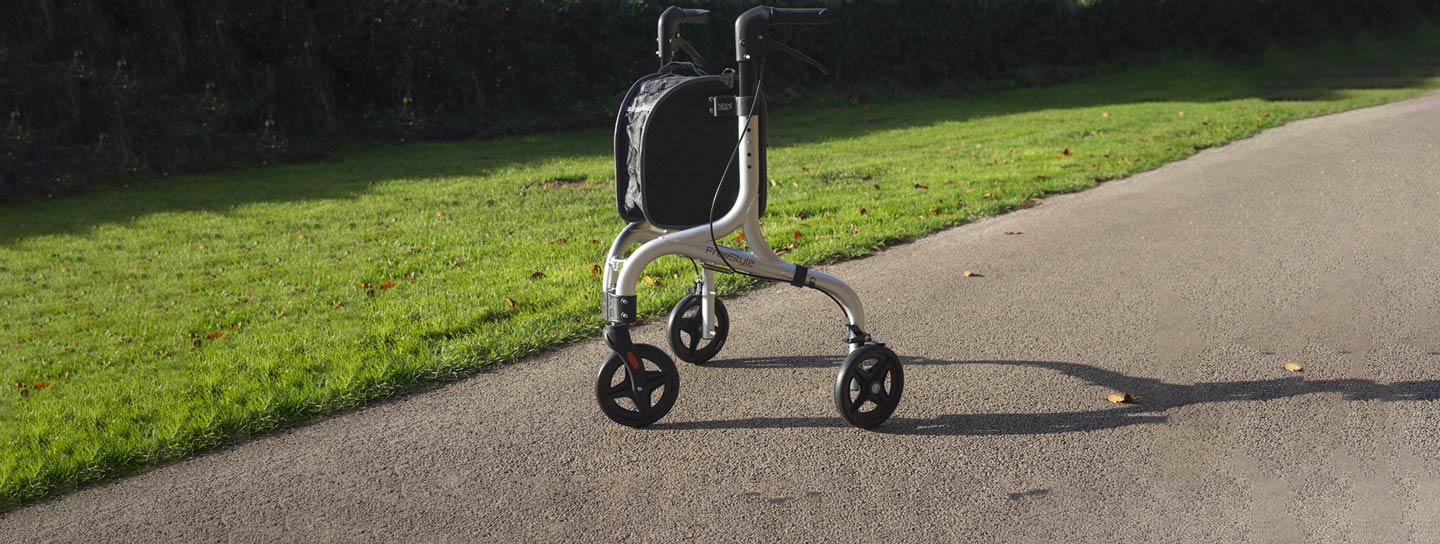
Finding the perfect rollator can be trickier than expected with the huge variety of styles and extras available. Learn about more about the different types with the help of our handy guide and find your ideal rollator.
A rollator is a mobility aid used to offer support to those who need it when walking. They have wheels at the bottom to make them easier to manoeuvre and often have brakes, a seat, or a bag or basket. There are many different types of rollators (sometimes known as rollator walkers) including rollators with three wheels, four wheels, rollators that can also be used as transit chairs etc. This guide should help you decide whether a rollator is right for you and which type of rollator would be more suitable for your needs.

If you've been looking at mobility aids for a while, there's a chance that you've looked at walking frames (sometimes known as zimmer frames or walkers) and rollators. On the face of it, both seem very similar but there are some key differences.
Rollators have wheels on the end of each leg, making them easier to push along, whereas walking frames usually don't. Walking frames tend to only have two wheels, if any, and need to be lifted. They're generally more suited for use indoors while you can get rollators that can be used indoors or outside.
Some rollators have a seat, giving you a handy space to rest when needed, which walking frames won't have.
There are also rollators that come with bags, so you can easily carry items like small amounts of shopping with you without risking overbalancing.
The biggest difference between a rollator and a wheelchair is that with a rollator, you can use it to walk around, whereas with a wheelchair you are either being pushed by someone else, or propelling the wheelchair yourself either by pushing the wheels or using a joystick (on powered chairs).
You can get rollators that turn into wheelchairs - or rather a transit chair. These 2-in-1 rollators tend to offer the best of both worlds until you reach a point where a more bespoke wheelchair is needed for full time use.

3-wheel rollators are usually among the lightest type of rollator, which makes it easier to lift it into the boot of a car or over a small step leading into the house. They also fold for easy storage, ideal if you don't have the space to leave it out all the time.
They tend to have height-adjustable steel or aluminium frames and many also include a bag or basket for easy storage, too.

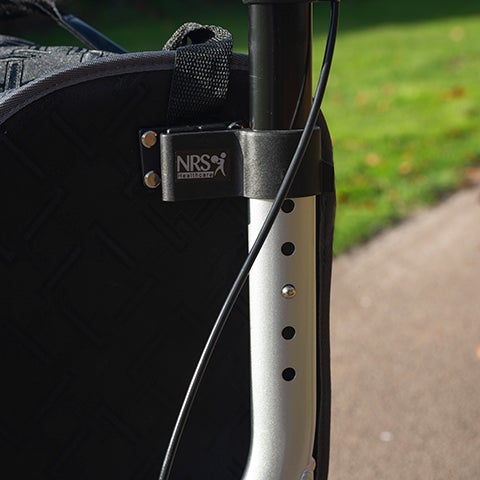
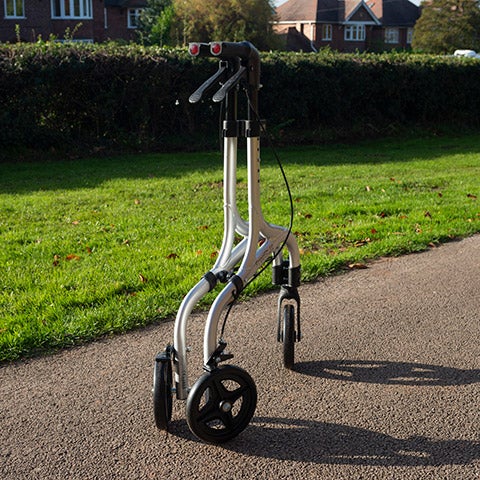

The 4 wheels on this type of rollator offer more stability and better balance, which is useful if you need extra support. Most 4-wheel rollators also have a seat and backrest to give you a place to rest when you need it.
While some 4-wheel rollators are foldable, they may not fold down by much. Check the product description carefully.
4-wheel rollators also have height adjustable handles and tend to include convenient storage options like a bag or basket where you can store your things.
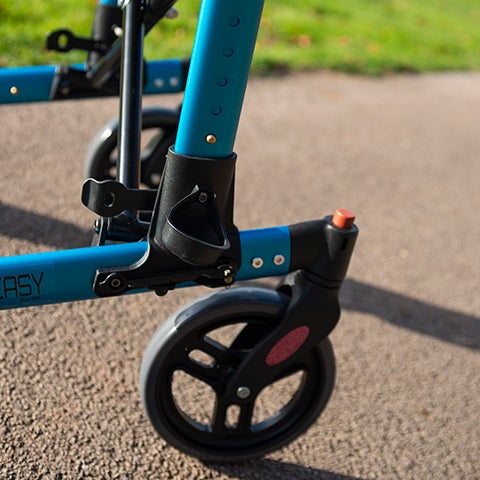
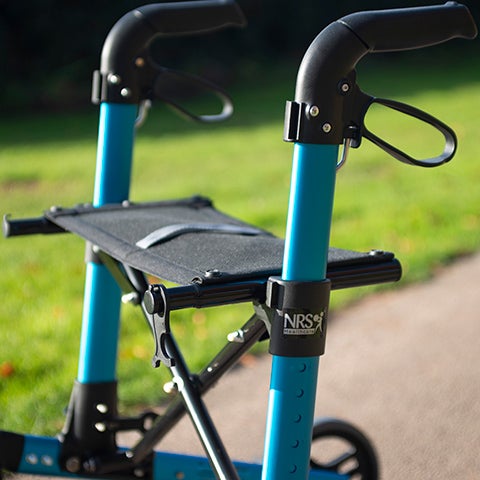
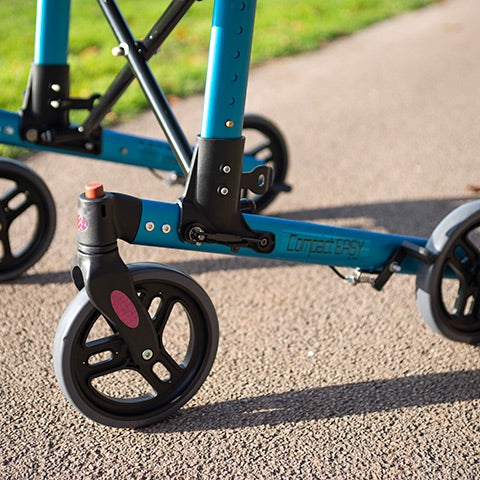

Plus size rollators (also known as 'heavy-duty rollators') are supportive rollators that offer a wider seat size and stronger frame than other 4-wheel rollators.
The plus size rollators also have 4 wheels to give you better support, stability, and balance as you go about your day. Many of them also have a bag or a basket, so you can carry your personal items with you.
These rollators also have height adjustable handles and a variety of seating and backrest options.
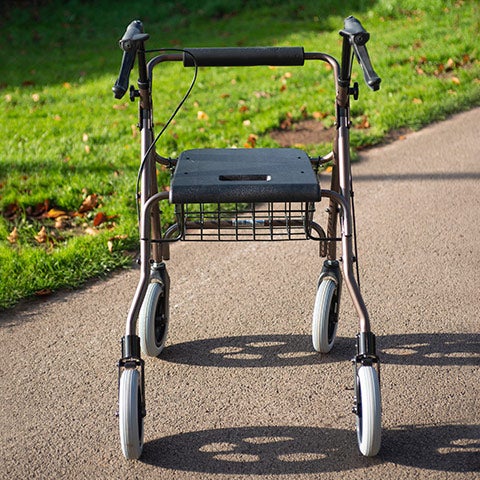

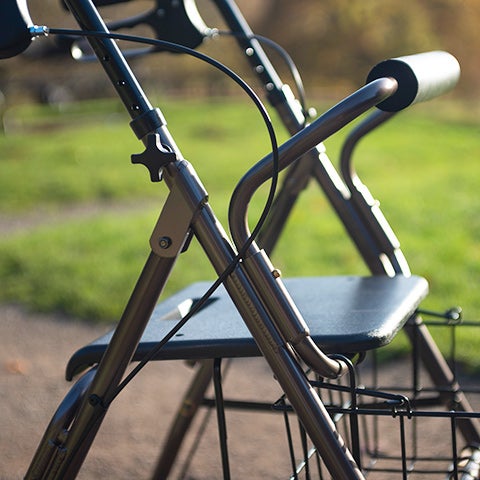
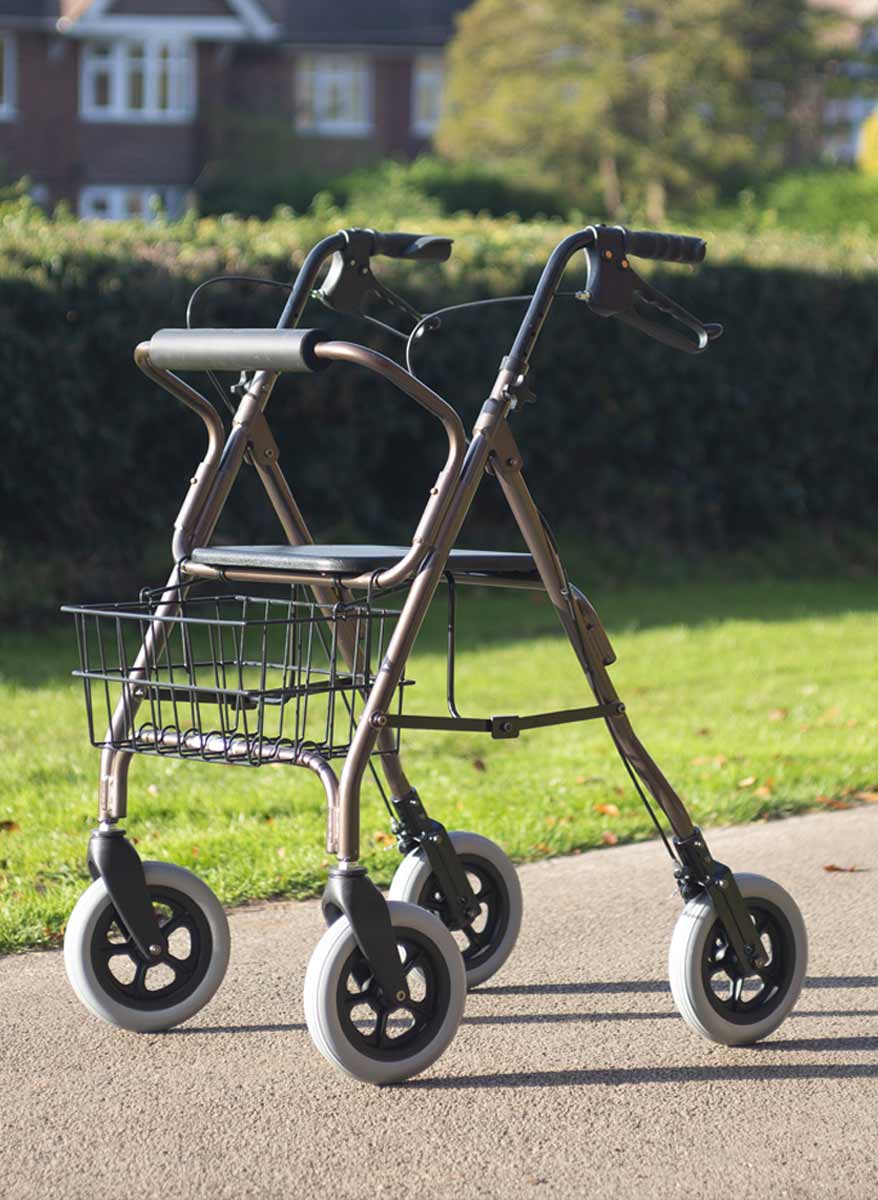
If you need support while walking but find it tricky to walk for long stretches of time, then the 2-in-1 rollator and transit chair could be a great option for you.
This type of rollator not only has height adjustable handles and storage options available, but it's also set up to use as a transit chair. This includes a padded seat and backrest, footrests, and a pushbar handle for your helper to use.
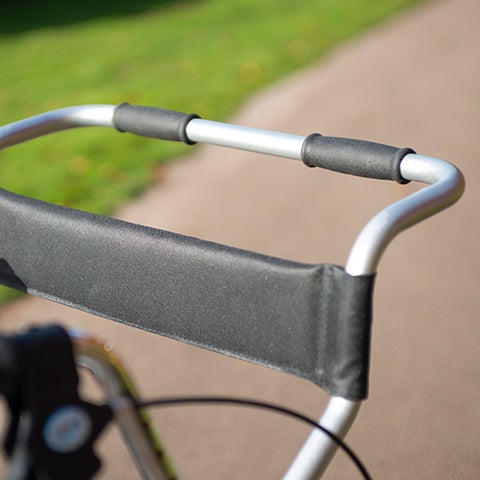
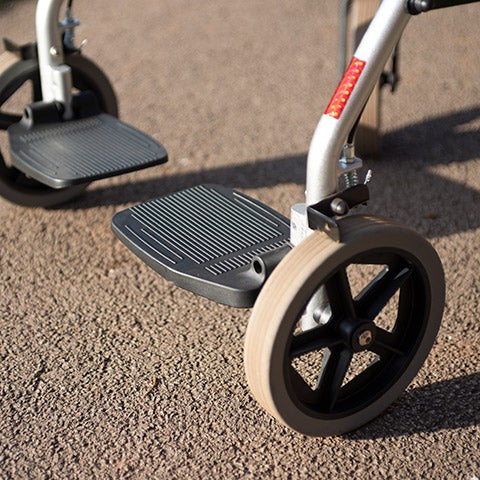

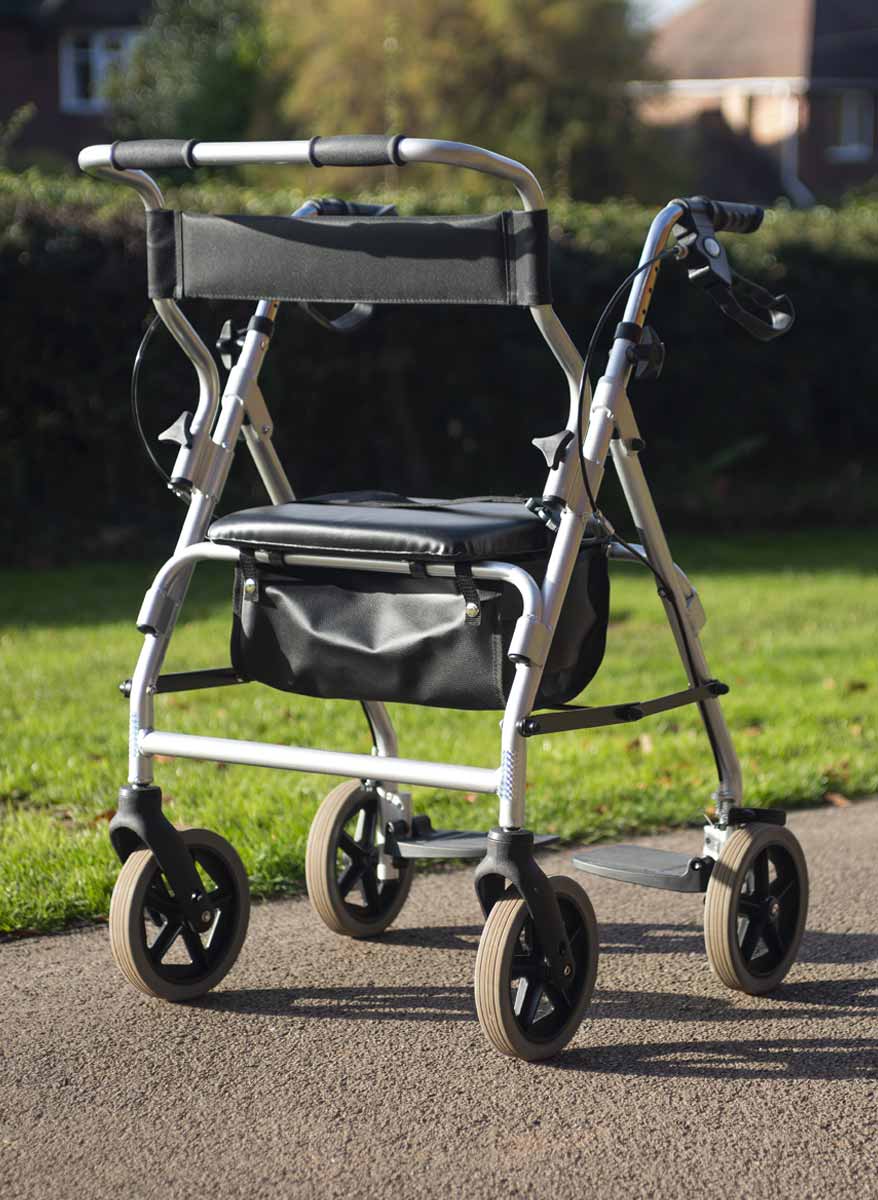
Things to think about
There are some rollators that have been specifically designed for use indoors but these obviously won't be suitable if you're looking for some support while you nip out to the shop. If you're looking for support while you walk to your local corner shop, you may want to consider a 3-wheel rollator as they can be easier to navigate around small aisles.
Some rollators are wider than others, so it's a good idea to measure the width of the space you'll want to push the rollator through to make sure that it can fit without issue. Even if you know you only want to use it outside, you still need to be able to get it in and out of your house. The same applies to your garden gate, if you have one.
You don't want to get your new rollator home only to find it doesn't fit through the front door.
Not all rollators come with a bag or a basket, so it's important to consider whether or not you want to be able to carry your personal items or a bit of shopping in it. If you do, be sure to double-check to the size of the bag or basket it comes with to make sure that it will be big enough to carry everything that you want it to.
It's also important to consider the position of the bag or basket - would it be easy for you to reach or would you need to stretch?
Have a think about how you'll be using your rollator. Do you plan on taking long walks? Do you find that you tire easily? If so, having a rollator with a seat would mean that you can take a break and rest when you need to.
Another consideration is the height of the seat - is it high enough that you can get up again with ease? If it's too low, you may find it a struggle to stand again when you're ready to get moving.
Not every rollator is foldable, and not every foldable rollator folds up to a small size, so it may take up more space than you planned.
Consider where you'll be storing your rollator. Do you need one that folds? Or is it fine if it remains out all the time? Be sure to check what the dimensions are when the rollator is folded, so you know how much space it will take up.
If you know you'll want to take your rollator with you when you travel, it's a good idea to measure the size of your boot to see if the rollator will actually fit. This could impact which rollator you can buy as not all of them can fold down and, of those that can fold, they may still take up more space than you're expecting.
For example, if your boot is small, a 3-wheel rollator may be a better fit than a 4-wheel rollator.
Occasionally you, or a relative, may need to lift the rollator, whether that's when putting it into the boot of a car or getting it up a small set of steps. Would you be able to lift it up on your own? Would the person with you be able to lift it either?
Rollators come in a variety of shapes and sizes and they're not all sized equally. Some have higher maximum handle heights, others are designed to support people of higher weights.
Check the maximum user weight and handle height in the product description to make sure that it's suitable for you. See below for tips on how to find the right handle height.

Making sure your rollator has the right handle height for you is key as the wrong handle height could leave you at risk of falling. This is because if the handle height is wrong, you may be stooping or leaning forwards too far or even leaning backwards to compensate for it.
You can work out the right handle height to look for by asking a friend or relative to measure from the floor to the bony part of your wrist, while standing. This is the measurement you will need to use when looking at the handle heights on prospective rollators.
Once your rollator arrives, here is how to adjust it to the right height:
Rollators can be a great way to help you get out and about more easily, but there are some safety dos and don'ts to keep in mind while you're using it.
on all orders over £70*
*Available on selected products for a one-time fee.